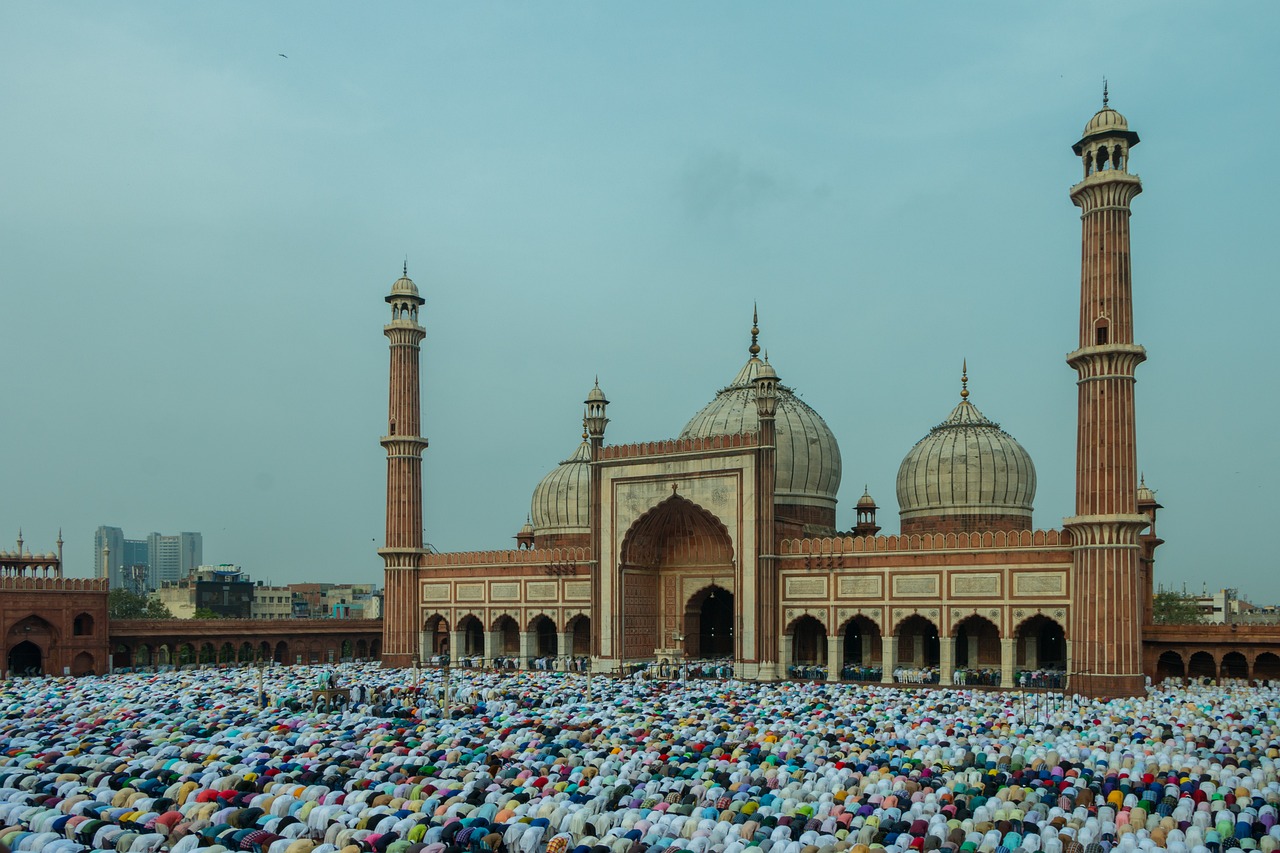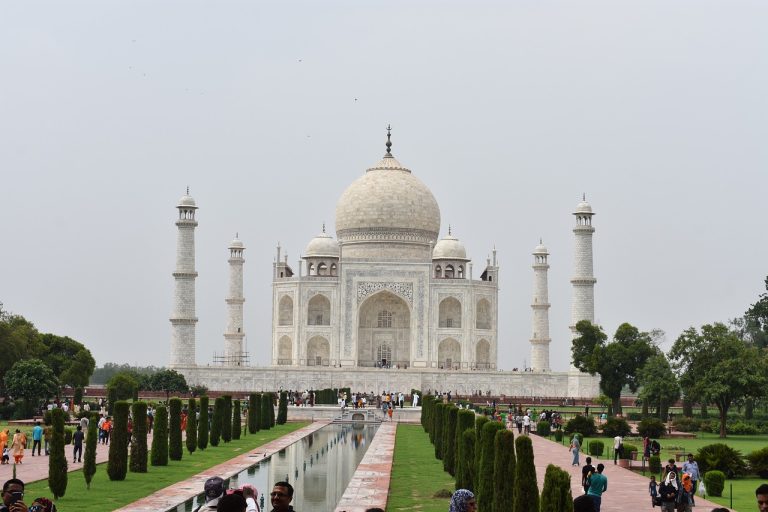Delhi India Video
Historical Landmarks of Delhi India: A Deep Dive
Delhi, the capital city of India, is a treasure trove of historical landmarks that showcase the rich cultural heritage of the country. From ancient forts to majestic tombs, each landmark holds centuries of history within its walls. In this article, we will take a deep dive into the historical landmarks of Delhi, exploring their significance and unraveling the stories they hold.
Red Fort
The Red Fort, also known as Lal Qila, is a UNESCO World Heritage Site and one of the most iconic landmarks in Delhi. Built by Emperor Shah Jahan in the 17th century, it served as the main residence of the Mughal emperors for nearly 200 years. The fort is made of red sandstone, which gives it its distinctive color. It houses several palaces, including the Diwan-i-Aam (Hall of Public Audience) and the Diwan-i-Khas (Hall of Private Audience). The fort is known for its intricate architectural details and stunning gardens.
- Significance: The Red Fort is a symbol of Mughal grandeur and represents the architectural brilliance of the era.
- Key features: The fort’s impressive walls, ornate gateways, and beautiful palaces make it a must-visit landmark.
- Historical significance: The Red Fort was the site where India’s first Prime Minister, Jawaharlal Nehru, hoisted the national flag on August 15, 1947, marking India’s independence from British rule.
Qutub Minar
Qutub Minar is a towering minaret located in the Mehrauli area of Delhi. It was built in the 12th century by Qutb-ud-din Aibak, the founder of the Delhi Sultanate. Standing at a height of 73 meters, it is the tallest brick minaret in the world. The minar is adorned with intricate carvings and verses from the Quran. The complex also houses other historical structures, including the Quwwat-ul-Islam Mosque and the Iron Pillar.
- Significance: Qutub Minar is a testament to the architectural brilliance of the early Islamic period in India.
- Key features: The minar’s unique architectural style, with its distinct balconies and tapering structure, makes it a prominent landmark.
- Historical significance: The Qutub Minar complex represents the early Islamic rule in India and showcases the fusion of different architectural styles.
Delhi India Image 1: 
Humayun’s Tomb
Humayun’s Tomb is a magnificent mausoleum located in the Nizamuddin area of Delhi. It was built in the 16th century for Emperor Humayun, the second Mughal emperor. The tomb is known for its stunning Persian-inspired architecture, with its red sandstone facade and intricate marble inlays. The surrounding gardens add to the serene ambiance of the site.
- Significance: Humayun’s Tomb is considered a precursor to the Taj Mahal and is a UNESCO World Heritage Site.
- Key features: The tomb’s magnificent dome, beautiful arches, and intricate detailing make it a marvel of Mughal architecture.
- Historical significance: The tomb marks the transition from the earlier Islamic architectural style to the grandeur of the Mughal era.
India Gate
India Gate is a prominent war memorial located in the heart of Delhi. It was built in the early 20th century to honor the soldiers of the British Indian Army who lost their lives during World War I and the Third Anglo-Afghan War. The memorial stands at a height of 42 meters and is surrounded by lush green lawns. It is a popular spot for locals and tourists alike.
- Significance: India Gate is a symbol of national pride and a tribute to the sacrifices made by Indian soldiers.
- Key features: The memorial’s grand arch, inscribed with the names of the fallen soldiers, and its serene surroundings make it a significant landmark.
- Historical significance: India Gate has witnessed numerous important events in Indian history, including the annual Republic Day parade.
Delhi India Image 2: 
Jama Masjid
Jama Masjid is one of the largest mosques in India and a prominent religious landmark in Delhi. Built by Emperor Shah Jahan in the 17th century, it can accommodate up to 25,000 worshipers at once. The mosque is known for its imposing red sandstone structure, towering minarets, and intricately designed prayer hall. It offers a breathtaking view of the city from its southern minaret.
- Significance: Jama Masjid is an important place of worship for the Muslim community and a symbol of religious harmony.
- Key features: The mosque’s vast courtyard, intricate carvings, and stunning architecture make it a must-visit landmark.
- Historical significance: Jama Masjid is closely associated with the Mughal era and reflects the grandeur of that period.
Lotus Temple
The Lotus Temple, also known as the Bahá’í House of Worship, is a unique architectural marvel in Delhi. Built in the shape of a blooming lotus flower, it is a place of worship for people of all faiths. The temple’s white marble petals and tranquil surroundings create a peaceful ambiance for meditation and prayer.
- Significance: The Lotus Temple is renowned for its architectural beauty and its message of unity and equality.
- Key features: The temple’s lotus-inspired design and its serene atmosphere make it a popular landmark.
- Historical significance: The Lotus Temple represents the Bahá’í faith and its principles of oneness and inclusivity.
Delhi India Image 3: 
Akshardham Temple
Akshardham Temple is a magnificent Hindu temple complex located on the banks of the Yamuna River in Delhi. Built in 2005, it is one of the largest and most intricately carved temples in the world. The temple showcases the rich cultural and spiritual heritage of India through its stunning architecture, intricate sculptures, and vibrant exhibitions.
- Significance: Akshardham Temple is a spiritual and cultural hub, attracting visitors from all over the world.
- Key features: The temple’s grand architecture, intricate carvings, and the mesmerizing musical fountain show make it a must-visit landmark.
- Historical significance: Akshardham Temple represents the timeless values and traditions of Hinduism.
Conclusion
Delhi’s historical landmarks offer a glimpse into the rich history and cultural heritage of India. From the grandeur of the Mughal era to the architectural wonders of the modern age, each landmark tells a story of its own. Exploring these landmarks is not only a journey through time but also an opportunity to appreciate the artistic and cultural diversity of Delhi.
References
– UNESCO World Heritage Centre: whc.unesco.org
– Archaeological Survey of India: asi.nic.in
– Delhi Tourism: delhitourism.gov.in
– India Today: indiatoday.in







